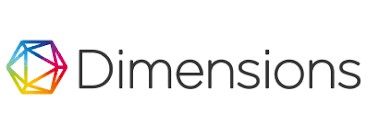Formulasi Nugget untuk Mencegah Anemia pada Remaja Putri Berdasar Menu Pondok Pesantren
Abstract
Background : Anemia is a health problem in the world, both in developed and developing countries, which is not only experienced by pregnant women and women of childbearing age (WUS) but can also be experienced by adolescents, both young men and young women. Based on the 2013 Riskesdas, the prevalence of anemia in Indonesia was 21.7%, with 26.4% of sufferers aged 5-14 years and 15-24 aged 18.4% with a prevalence of anemia in women of 23.7%. One of the efforts to prevent anemia in young women can be done by consuming foods that are high in protein, iron and vitamin C.
Purpose : The research aims to find out the right formulation of nuggets made from shrimp, tofu, sorghum flour and green spinach, product organoleptic namely color, aroma, taste and texture, analyzing macronutrients (protein, fat and carbohydrates) and micronutrients (iron and Vitamin C).
Methods : The study used a completely randomized design with four formulas namely F1, F2, F3 and F4, based on the comparison of shrimp, tofu, sorghum flour and green spinach, 10:20:30:40; 40:30:20:10; 25:20:15:10; and 10:15:20:25. Statistical analysis used the Kruskall Wallish test and follow-up tests used the Mann-Whitney test.
Results : The results of the study based on the RDA of 30% of female adolescents showed that 100 g of F1 formula contained protein, fat, carbohydrates, iron and vitamin C, namely 45%, 41%, 22%, 51% and 37%. Formula F2 contains 48%, 42%, 19%, 51% and 55%. Formula F3 contains 50%, 41%, 15%, 50% and 74%. Formula F4 contains 52%, 40%, 12%, 49% and 93%.
Conclusion : The formula chosen based on the best treatment level is F2 with the first ranking result on the organoleptic test variable is taste.
Copyright (c) 2023 JGK:Jurnal Gizi dan Kesehatan

This work is licensed under a Creative Commons Attribution-ShareAlike 4.0 International License.
Authors who publish with this journal agree to the following terms:
- Authors retain copyright and grant the journal right of first publication with the work simultaneously licensed under a Creative Commons Attribution License that allows others to share the work with an acknowledgement of the work's authorship and initial publication in this journal.
- Authors are able to enter into separate, additional contractual arrangements for the non-exclusive distribution of the journal's published version of the work (e.g., post it to an institutional repository or publish it in a book), with an acknowledgement of its initial publication in this journal.
- Authors are permitted and encouraged to post their work online (e.g., in institutional repositories or on their website) prior to and during the submission process, as it can lead to productive exchanges, as well as earlier and greater citation of published work










